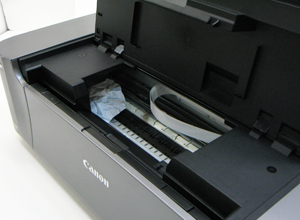Solr vs. Elasticsearch: Which Platform is Right for You?

In the realm of open-source search engines, Apache Solr and Elasticsearch have emerged as the front runners, powering search functionalities across diverse datasets and applications. Both platforms are built on Apache Lucene, a high-performance, full-featured text search engine library. While they share this common foundation, Solr and Elasticsearch cater to different needs and scenarios. Understanding the nuances between the two can help organizations and developers make an informed choice that aligns with their specific requirements.
Introduction to Solr
Apache Solr, created by the Apache Software Foundation, is a mature and powerful search engine that has been in the market since 2004. It is well-regarded for its scalability, reliability, and robust feature set, including full-text search, hit highlighting, faceted search, real-time indexing, and rich document handling. Solr is designed to handle a wide variety of data types, making it a versatile choice for enterprise search applications.
Introduction to Elasticsearch
Elasticsearch, on the other hand, was introduced in 2010 by Shay Banon. It quickly gained popularity for its ease of use, speed, and scalability. Elasticsearch is not just a search engine; it’s part of the Elastic Stack (formerly ELK Stack), which offers a powerful set of tools for data ingestion, enrichment, storage, analysis, and visualization. This integrated ecosystem makes Elasticsearch an attractive option for real-time search and analytics applications.
Performance and Scalability
Both Solr and Elasticsearch are designed to scale horizontally, ensuring they can handle large volumes of data and high query volumes. However, Elasticsearch has an edge in terms of ease of scalability. Its architecture is designed from the ground up to be distributed, making it simpler to scale and manage. Solr has introduced similar capabilities with its SolrCloud feature, but it’s generally considered more complex to set up and manage at scale.
Ease of Use
Elasticsearch scores high on ease of use, particularly because of its simple RESTful API and the extensive documentation available. Its JSON-based configuration and HTTP interface make it highly accessible for developers new to search technologies. Solr, while not particularly difficult to use, has a steeper learning curve compared to Elasticsearch, particularly when it comes to setting up and managing clusters.
Community and Ecosystem
Both platforms boast vibrant communities and extensive ecosystems. However, Elasticsearch benefits from being part of the broader Elastic Stack, which includes Kibana for data visualization, Beats for data collection, and Logstash for data processing. This integrated suite of tools has made Elasticsearch particularly popular for log and event data analysis, in addition to search applications.
Real-Time Search and Analytics
Elasticsearch is often praised for its real-time search and analytics capabilities. Its design focuses on providing near real-time search and analytics, making it a preferred choice for applications where timely data analysis and reporting are critical. Solr also offers real-time search capabilities, but Elasticsearch’s integrated stack and focus on analytics provide a more seamless experience for real-time data applications.
Use Cases
Choosing between Solr and Elasticsearch often comes down to specific use cases. Solr, with its advanced search features and proven performance, is well-suited for enterprise search applications, such as website search engines or document management systems. Its robust feature set and configurability make it ideal for complex search applications requiring fine-tuned optimization.
Elasticsearch, with its real-time analytics and integrated data processing stack, is better suited for applications requiring fast data analysis, such as log and event data monitoring, site search with analytics, and large-scale application monitoring. Its ease of use and scalability also make it a popular choice for startups and companies looking to quickly implement search and analytics features.
Conclusion
The choice between Solr and Elasticsearch is not one of outright superiority but of alignment with project requirements, team expertise, and long-term goals. Solr offers a mature, feature-rich platform for complex search applications, where control and configurability are paramount. Elasticsearch shines in scenarios requiring real-time search and analytics, ease of use, and scalability, supported by an integrated stack for data processing and visualization.
Ultimately, the decision should be informed by a thorough evaluation of the specific needs of your application, your team’s familiarity with each platform, and the long-term vision for your project. Whether you choose Solr or Elasticsearch, you’re selecting a powerful tool that can provide deep insights and robust search capabilities to your applications.


